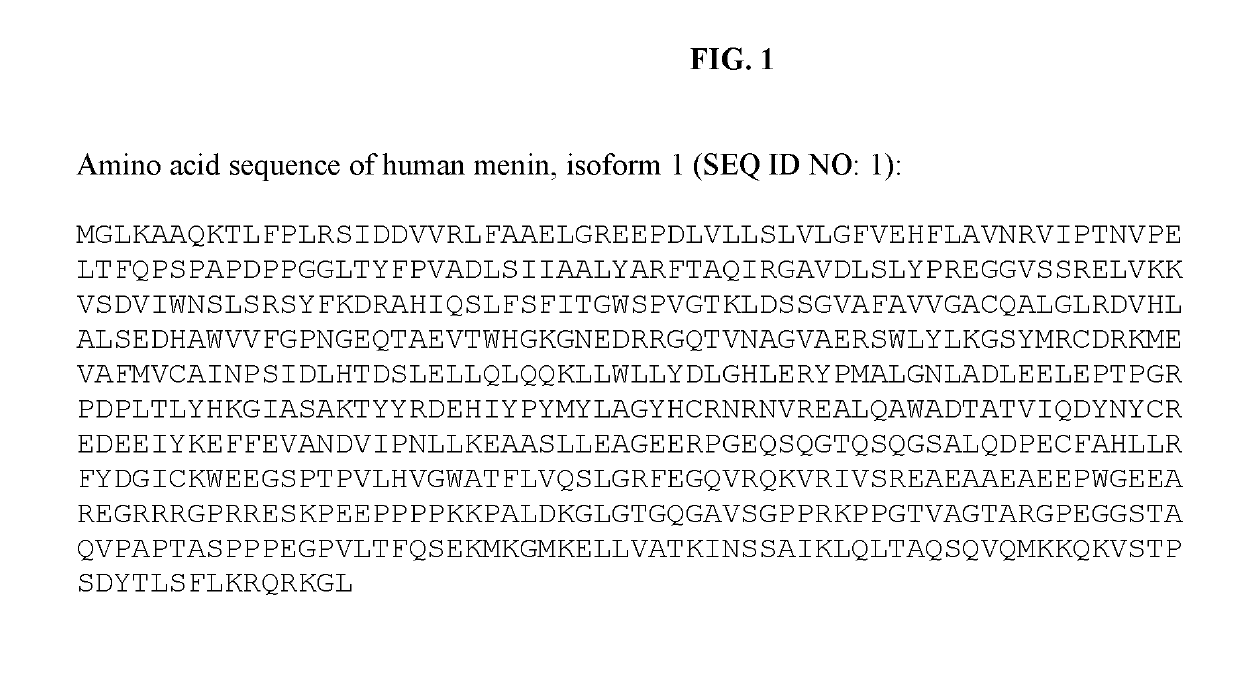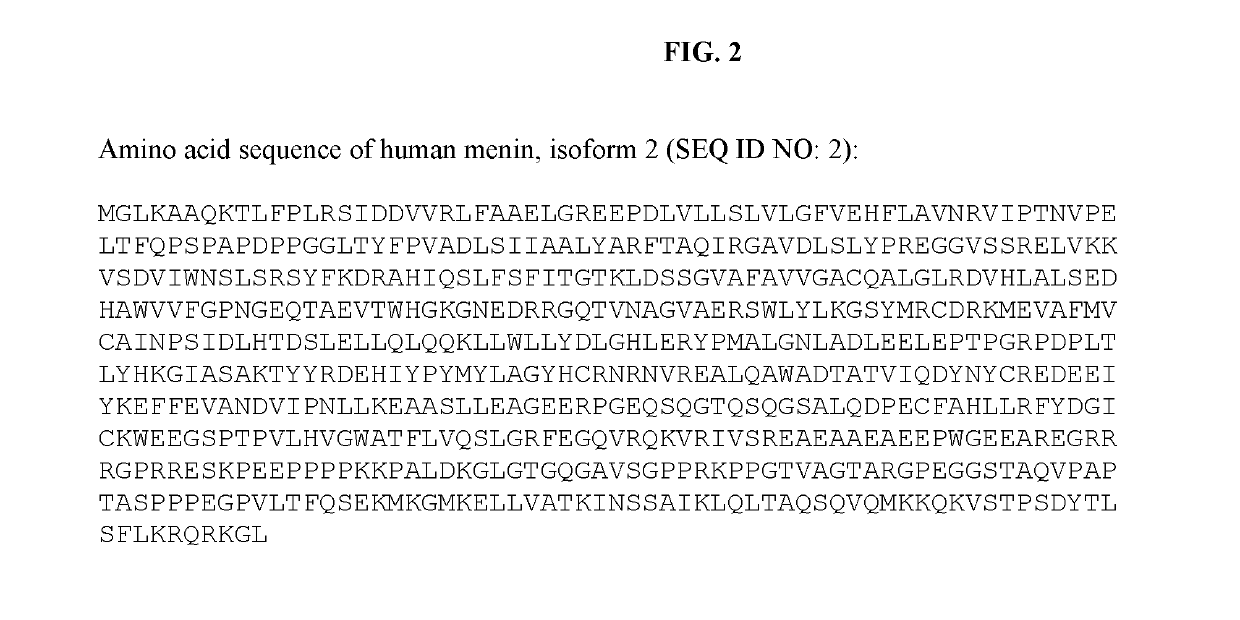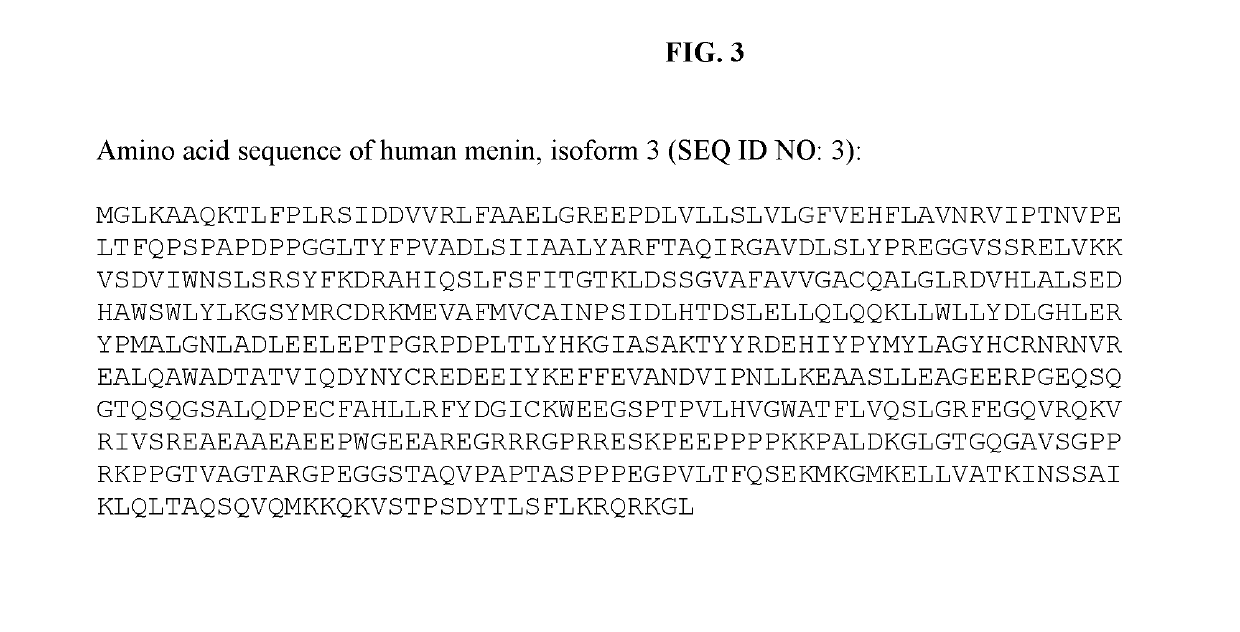Substituted inhibitors of menin-mll and methods of use
a technology of substituting inhibitors and menin, which is applied in the field of substituting inhibitors of menin-mll and, can solve the problems of affecting proliferation and differentiation, affecting leukemia development, and increasing cell proliferation and differentiation, and achieves the effect of reducing the expression of an mll fusion protein target gen
- Summary
- Abstract
- Description
- Claims
- Application Information
AI Technical Summary
Benefits of technology
Problems solved by technology
Method used
Image
Examples
example 1
of Compound 59 in Table 1
[0595]
[0596]Step A: Preparation of Compound 59-2:
[0597]To a solution of ethyl-2-(diethoxylphosphoryl) acetate (1.91 g, 8.5 mmol) in THF (30 mL) was added NaH (421 mg, 10.5 mmol) at 0° C. The reaction was stirred at 0° C. for 0.5 hour before 59-1 (2 g, 8 mmol) was added. The reaction mixture was stirred at room temperature for 5 h. Ice-water (50 mL) was added, and the product extracted with ethyl acetate (50 mL×2). The combined organic layer was washed with brine (50 mL), dried over sodium sulfate and concentrated in vacuo. The residue was purified by flash chromatography (eluted 20% EtOAc in pet. ether) to afford 2.15 g of 59-2 as a white solid (yield: 85%).
[0598]Step B: Preparation of Compound 59-3:
[0599]To a solution of 59-2 (905 mg, 2.85 mmol) in MeOH (20 mL) was added (Boc)2O (1.24 g, 5.71 mmol) and Pd / C catalyst. The reaction mixture was stirred at room temperature for 8 hours under H2. TLC showed the reaction was complete. The reaction was filtered and...
example 2
of Compound 48 in Table 1
[0612]
[0613]Step A: Preparation of Compound 48-2:
[0614]A mixture of 48-1 (300 mg, 1.40 mmol), 2-bromoethanol (347 mg, 2.80 mmol) and K2CO3 (772 mg, 5.60 mmol) in CH3CN (30 mL) was stirred at 90° C. under N2 overnight. TLC showed the reaction was complete. Solid was removed by filtration and solvent was removed under vacuum. The residue was purified by silica gel column chromatography (eluted 2.5% MeOH in dichloromethane) to give 48-2 as a yellow oil (296 mg, yield: 82%).
[0615]Step B: Preparation of Compound 48-3:
[0616]To a mixture of 48-2 (296 mg, 1.15 mmol) and Et3N (232 mg, 2.30 mmol) in dichloromethane (20 mL) was added MsCl (197 mg, 1.73 mmol) at 0° C. The reaction mixture was stirred at room temperature for 1 h. TLC showed the reaction was complete. Saturated aqueous NaHCO3 was added to the reaction mixture. The organic layer was separated, washed with brine, dried over anhydrous Na2SO4, and concentrated. The residue was purified by silica gel column ch...
example 3
of Compound 2 in Table 1
[0625]
[0626]Step A: Preparation of Compound 2-2:
[0627]To a suspension of K2CO3 (3.6 g, 26.5 mmol) and tert-butyl piperazine-1-carboxylate (1.0 g, 5.3 mmol) in CH3CN (15 mL) was added methyl 2-bromopropanoate (2.2 g, 13.4 mmol). The reaction was stirred at 80° C. for 10 hours. TLC showed that the reaction was complete. The reaction mixture was allowed to cool to room temperature, then the solid filtered off and solvent removed under vacuum. The residue was purified by silica gel column chromatography (CH2Cl2 / MeOH=50:1) to give tert-butyl 4-(1-methoxy-1-oxopropan-2-yl)piperazine-1-carboxylate (2-2) as a brown oil (1.4 g, yield: 99%).
[0628]Step B: Preparation of Compound 2-3:
[0629]To a solution of tert-butyl 4-(1-methoxy-1-oxopropan-2-yl)piperazine-1-carboxylate (540 mg, 2 mmol) in THF (10 mL) was added LiAlH4 (1.0 mL, 2.5 mol in THF) at 0° C. dropwise. The reaction mixture was stirred at the same temperature for 2 hours. TLC showed that the reaction was complet...
PUM
| Property | Measurement | Unit |
|---|---|---|
| Fraction | aaaaa | aaaaa |
| Mass | aaaaa | aaaaa |
| Fraction | aaaaa | aaaaa |
Abstract
Description
Claims
Application Information
 Login to View More
Login to View More - R&D
- Intellectual Property
- Life Sciences
- Materials
- Tech Scout
- Unparalleled Data Quality
- Higher Quality Content
- 60% Fewer Hallucinations
Browse by: Latest US Patents, China's latest patents, Technical Efficacy Thesaurus, Application Domain, Technology Topic, Popular Technical Reports.
© 2025 PatSnap. All rights reserved.Legal|Privacy policy|Modern Slavery Act Transparency Statement|Sitemap|About US| Contact US: help@patsnap.com



